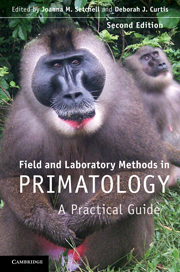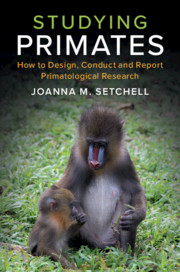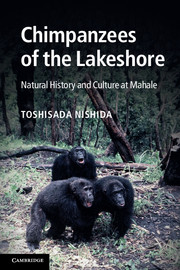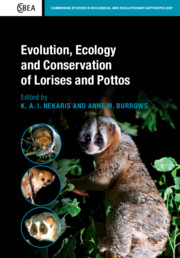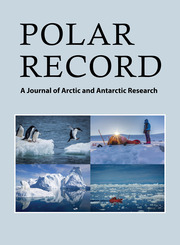Field and Laboratory Methods in Primatology
Building on the success of the first edition and bringing together contributions from a range of experts in the field, the second edition of this guide to research on wild primates covers the latest advances in the field, including new information on field experiments and measuring behaviour. It provides essential information and advice on the technical and practical aspects of both field and laboratory methods, covering topics such as ethnoprimatology; remote sensing; GPS and radio-tracking; trapping and handling; dietary ecology; and non-invasive genetics and endocrinology. This integrated approach opens up new opportunities to study the behavioural ecology of some of the most endangered primates and to collect information on previously studied populations. Chapters include methodological techniques; instructions on collecting, processing and preserving samples/data for later analysis; ethical considerations; comparative costs; and further reading, making this an invaluable tool for postgraduate students and researchers in primatology, behavioural ecology and zoology.
- The only practical guide to field and laboratory methods in primatology
- Offers point-by-point instructions for sample/data collection, processing and preservation, making it ideal for use as a reference tool in the field
- Covers a range of methods and techniques with both students and senior researchers in mind
Reviews & endorsements
'This is an exceptional and invaluable book for both teaching field and laboratory techniques and for practical use by professional primatologists and behavioral-ecologists, generally. I have used the first edition with great success in methodology courses. This new edition has been updated to include the latest advances in the field and has added materials on field experiments and on measuring behavior. A truly indispensable resource.' Robert W. Sussman, Washington University
'Given the rapid theoretical and technical advances that have occurred in primate field studies, Setchell and Curtis should be required reading for undergraduates seeking to gain experience in observing primates in wild or captive settings, graduates conducting field research, as well as more senior researchers considering the benefits of using new methodologies and approaches to the study of nonhuman primate behavior, ecology, physiology, genetics, and biology. It's the most practical, complete and comprehensive primer available for field researchers. I recommend it highly. The volume is unique in addressing both the 'how to' and 'why' issues in field primatology. It offers a well-written, practical guide for assessing the benefits of using new methodological approaches in field research. Since I intend to take it with me to the field, my only suggestion for improvement is to encourage the publishers to print the volume on waterproof paper!' Paul A. Garber, University of Illinois
'… a very important resource and a really useful tool …' Mammalia
Product details
February 2011Hardback
9780521194099
456 pages
229 × 152 × 25 mm
0.84kg
38 b/w illus. 11 tables
Available
Table of Contents
- Introduction Deborah J. Curtis, Joanna M. Setchell and Maurico Talebi
- 1. Human-nonhuman primate interactions: an ethnoprimatological approach Lisa Jones-Engel, Gregory A. Engel and Agustin Fuentes
- 2. Habituating primates: processes, techniques, variables and ethics Elizabeth A. Williamson and Anna T. C. Feistner
- 3. Habitat description and phenology Jörg U. Ganzhorn, S. Jacques Rakotondranary and Yedidya R. Ratovonamana
- 4. Geographic information systems and remote sensing Patrick E. Osborne and Louise Glew
- 5. Monitoring local weather and climate Julian C. Mayes and Nicholas Pepin
- 6. Survey and census methods: population distribution and density Caroline Ross and Nigel Reeve
- 7. Trapping Clifford J. Jolly, Jane E. Phillips-Conroy and Alexandra E. Müller
- 8. Handling, anaesthesia, health evaluation and biological sampling Steve Unwin, Marc Ancrenaz and Wendi Bailey
- 9. Morphology, morphometrics and taxonomy Colin Groves and Joanne Harding
- 10. Marking and radio-tracking Paul E. Honess and David W. Macdonald
- 11. Field experiments with non-human primates: a tutorial Klaus Zuberbühler and Roman Wittig
- 12. Feeding ecology, frugivory and seed dispersal J. Lawrence Dew
- 13. Dietary analysis I: food physics Peter W. Lucas, Daniel Osorio, Nayuta Yamashita, Jonathan F. Prinz, Nathaniel J. Dominy and Brian W. Darvell
- 14. Dietary analysis II: food chemistry Peter W. Lucas, Richard T. Corlett, Nathaniel J. Dominy, Hafejee C. Essackjee, Pablo Riba-Hernandez, Lawrence Ramsden, Kathryn E. Stoner and Nayuta Yamashita
- 15. Collecting arthropods and arthropod remains for primate studies Claire M. P. Ozanne, James R. Bell and Daniel G. Weaver
- 16. Tape-recording primate vocalisations Thomas Geissmann and Stuart Parsons
- 17. Photography and video for field researchers Noel Rowe and Marc Myers
- 18. Chronobiological aspects of primate research Hans G. Erkert
- 19. Thermoregulation and energetics Jutta Schmid
- 20. Field endocrinology: monitoring hormonal changes in free-ranging primates J. Keith Hodges and Michael Heistermann
- 21. Collection, storage and analysis of non-invasive genetic material in primate biology Benoît Goossens, Nicola Anthony, Kathryn Jeffery, Mireille Johnson-Bawe and Michael W. Bruford
- 22. Tips from the bush: an A-Z of suggestions for successful fieldwork Simon K. Bearder, K. Anna, I. Nekaris and Julia N. Lloyd
- Index.

